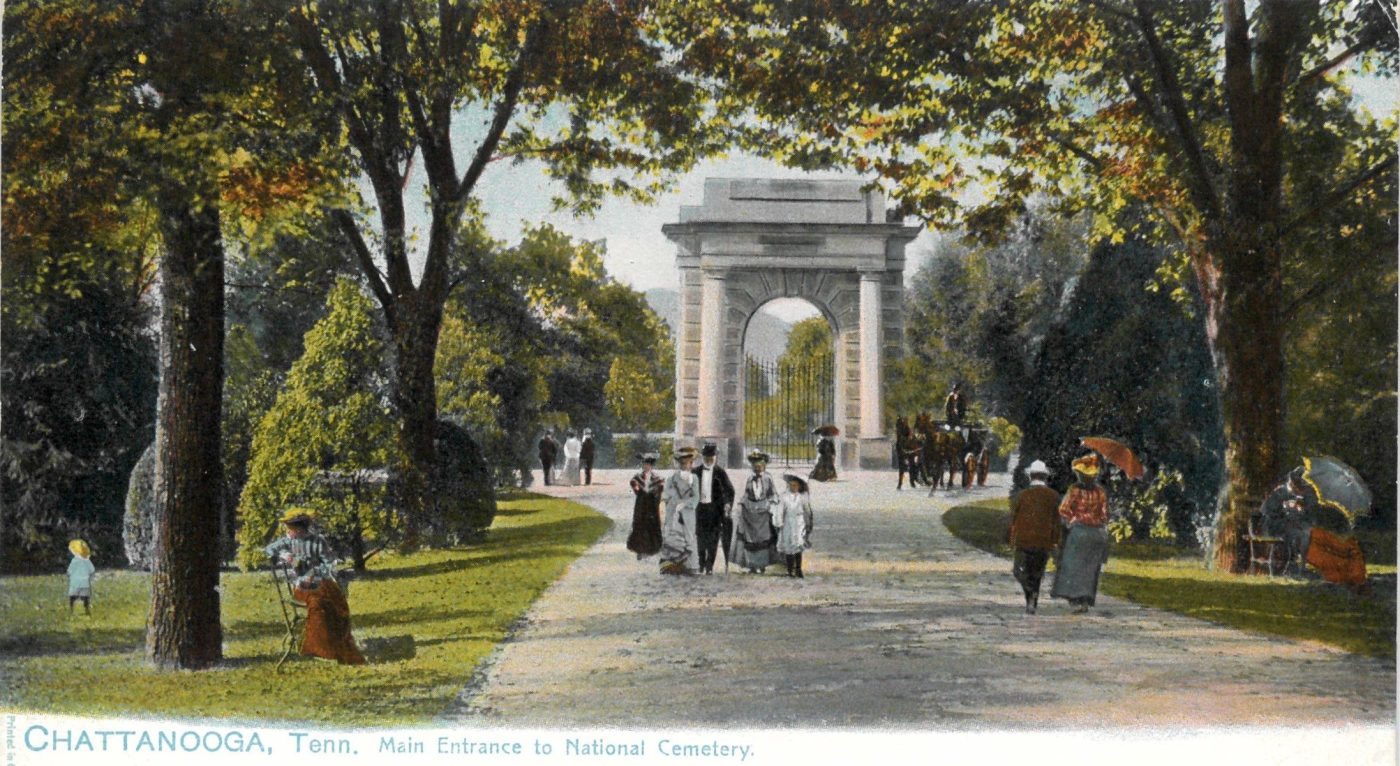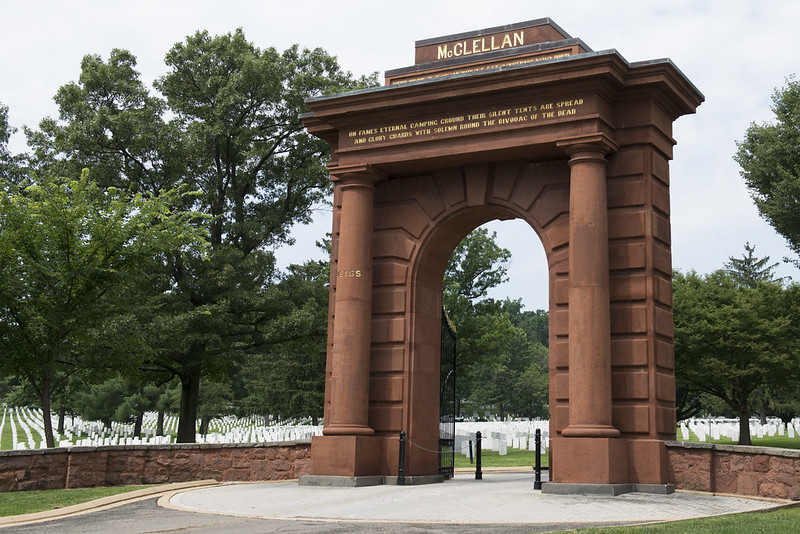
In early 1880, a journalist visited the monumental gateway arch at Chattanooga National Cemetery in Tennessee as it was nearing completion. He came away impressed. “The government has shown by this, if nothing else, her appreciation of her fallen dead,” he wrote in the Chattanooga Daily Times. “The archway by its hugeness, its immensity, Roman in its character, in its architecture military, conveys the very idea in itself, that it stands as a monument over the country’s dead.”
The Chattanooga archway is one of five masonry gates that originally served as entrances to select national cemeteries. Quartermaster General Montgomery C. Meigs proposed them in a letter to the Secretary of War in 1870. He suggested the gates for “several of the most important cemeteries” in the South once funding had been provided for essential activities, such as reburial of the dead and the marking of graves with wood headboards. By important, he meant national cemeteries containing the largest number of Union war dead, at least 10,000 graves. Seven arched gateways were planned but only five were realized, at Chattanooga and Nashville, Tennessee; Marietta, Georgia; Vicksburg, Mississippi; and Arlington, Virginia.
Work on the first arch, named for General George B. McClellan, commenced at Arlington National Cemetery in 1871. It was unique among the five structures in that it was made of locally quarried red Seneca sandstone. Limestone was used to construct the other four. All were completed by 1883 at a cost of between $6,000 and $7,000 each.

Meigs’ approach was to echo the gateways “erected at suburban cemeteries” using an architectural form already associated with the memorialization of war and its sacrifices. Monumental arches are built primarily for two reasons. Since the times of the Roman Empire, triumphal arches have been erected to celebrate military conquests and conquerors. These free-standing structures are usually placed in prominent civic locations, such as thoroughfares used as parade routes. Memorial arches, on the other hand, serve a different purpose. They are intended to honor and commemorate the dead and typically function as the gateway to a cemetery or a park, where they form part of the wall enclosing the property.
National cemetery gateways embody classical Roman architecture. The rusticated piers and arch are topped with a flat attic story. Doric columns flanking the arch support an entablature, and the whole stands around 32 feet high. An outward-facing inscription identifies the cemetery and the date it was established; inward-facing text indicates the number of Union Civil War soldiers buried there.
The arched gateways were among the largest and most formal structures built in the national cemeteries until the twentieth century. Today, only the Nashville and Marietta arches continue to serve as the primary entrance to the cemetery grounds. At the other locations, property expansions and changing traffic patterns render them passive relics. Despite these changes, the gateway arches remain stirring tributes to, in the words of the Chattanooga Daily Times writer from long ago, “those brave ones who bled and died for their country.”
Note: Arlington National Cemetery is managed by the Department of the Army; Vicksburg National Cemetery is managed by the National Park Service, Department of the Interior.
By Sara Amy Leach
Senior Historian, National Cemetery Administration
Share this story
Related Stories

History of VA in 100 Objects
Object 96: Postcard of Veterans Vocational School
In 1918, the government created the first nationwide vocational training system to help disabled Veterans acquire new occupational skills and find meaningful work. Over the next 10 years, more than 100,000 Veterans completed training programs in every field from agriculture and manufacturing to business and photography.

History of VA in 100 Objects
Object 95: 1840 Census of Pensioners
In a first, the 1840 census collected data on Veterans and widows receiving a pension from the federal government. The government published its findings in a stand-alone volume titled “A Census of Pensioners for Revolutionary or Military Services.”

History of VA in 100 Objects
Object 94: Southern Branch of the National Home
The Southern Branch of the National Home for Disabled Volunteer Soldiers opened in Hampton, Virginia, in late 1870. The circumstances surrounding the purchase of the property, however, prompted an investigation into the first president of the National Home’s Board of Managers, Benjamin Butler.


